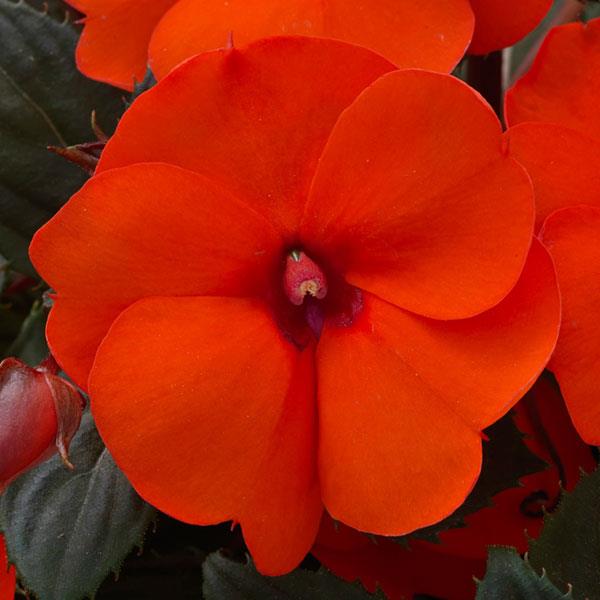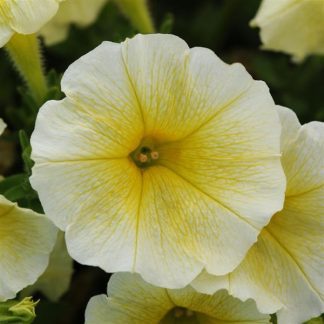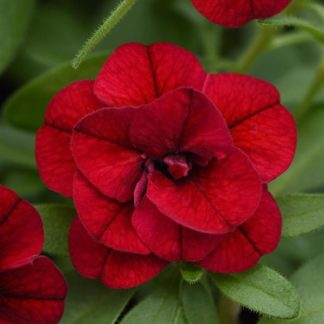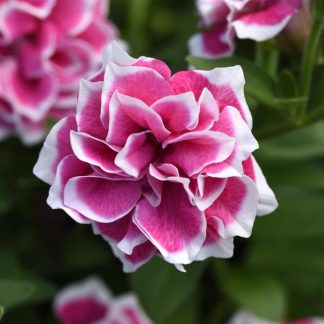Description
SunPatiens Compact Hot Coral: A Burst of Tropical Energy for Every Garden
Welcome to the World of Hot Coral
Imagine stepping outside and meeting a flower that greets you with the glow of a summer sunset. That is SunPatiens Compact Hot Coral. Its blooms sit between sweet melon and soft tangerine, and they keep that shimmer from the first warm day of spring until a hard frost whispers, “Rest now.” You can nestle this impatiens in a pot on the porch, line a sunny path, or brighten a shady nook. It works almost everywhere—and it works hard for us.
We will walk through what makes this variety special, and then we will guide you, step by gentle step, on how to help it shine. Feel free to picture your own space as we go. After more than one season together, you and Hot Coral may feel like old friends.
Meet the Marvel: Description
Shape and Size
SunPatiens Compact Hot Coral grows in a tidy, mounded form. At full strength it reaches 12–32 inches tall and 12–26 inches wide. That “compact” tag means the plant stays neat without constant pruning. In other words, it is low fuss yet still bold.
Flower Power
The blooms open wide—bigger than most standard impatiens—and sit high above the foliage. Their color leans coral with a gentle pink undertone. In bright light the petals glow almost neon; in shade they soften to a warm blush. Either way, the flowers blanket the plant so fully that leaves sometimes hide below the color canopy.
Foliage Flair
The leaves are deep, glossy green with fine veins. They create rich contrast that makes the blooms pop. Even without flowers, the foliage stays handsome, adding texture to containers and beds.
Bloom Timeline
Hot Coral starts to open buds soon after you plant it. It then blooms without pause until late fall. You do not need to remove spent petals; new flowers simply push the old ones aside. Long blooming plus no deadheading equals more time for you to sip lemonade and enjoy the view.
Climate Strength
These impatiens handle heat, humidity, and sun better than old-school impatiens. Downy mildew? Not a worry here. Sun, shade, or a mix? Hot Coral says “yes” to all three. That flexibility is why many gardeners reach for SunPatiens first when they want color that lasts.
How to Care for SunPatiens Compact Hot Coral
1. Picking the Perfect Spot
- Light Rule: Aim for four to six hours of sun daily. Full morning sun with afternoon shade is ideal, but the plant also thrives in filtered light or bright shade.
- Shelter Tip: In blazing afternoon heat, light shade keeps color vivid and leaves from scorching. Instead of moving pots each day, choose a site that naturally softens the late-day sun.
2. Soil Preparation
- Texture: Loose, rich, and well-draining. Mix compost or aged leaf mold into native soil.
- pH Range: Neutral to slightly acidic. Most garden soils fall here already, so stick to organic matter rather than chemical changes.
- Container Blend: Use a high-quality potting mix with perlite or pine bark for extra airflow. Roots need oxygen as much as moisture.
3. Planting and Spacing
- Timing: Plant after night temps sit above 55 °F. Cold soil slows growth.
- Depth: Set transplants at the same depth they grew in their nursery pots. Press gently to remove air pockets.
- Spacing: Keep 12–22 inches between plants. Crowding blocks airflow and invites disease, while open space encourages full, bushy growth.
4. Watering Wisdom
- First Week: Water every day or two to settle roots.
- After Establishment: Aim for even moisture. Let the top inch dry slightly, then drench the soil. Overly wet soil leads to root rot; bone-dry soil leads to wilt and dropped buds.
- Container Check: Stick a finger in the mix. Dry to the first knuckle? Time to water. Use a watering can with a rose head to avoid splashing soil on leaves.
5. Feeding and Fertilizer
- Start Strong: Mix a slow-release granular fertilizer into soil at planting.
- Ongoing Care: Every two weeks, use a half-strength balanced liquid feed (for example, 10-10-10). Too much nitrogen pushes leaves over blooms. Gentle, steady feeding keeps flowers abundant and plants sturdy.
6. Temperature and Humidity
- Heat Lover: Performs best between 70 °F and 90 °F.
- Chill Factor: Below 50 °F, growth stalls. A light frost ends the show.
- Humidity Help: Hot Coral adores moisture in the air. In arid zones, pair it with a drip-line or place pebble trays under pots to lift humidity.
7. Pruning and Grooming
- Natural Form: The plant stays compact on its own, so pruning is optional.
- Encouraging Bushiness: Pinch tips once early in the season if you want an extra-dense look.
- Tidy Up: Remove yellowing leaves that appear deep inside the plant. Good air keeps foliar issues away.
8. Pests and Problems
- Watch For: Aphids, spider mites, thrips. They show up during hot, dry spells.
- Prevention: Spray a gentle blast of water under leaves every week. In other words, routine showers keep pests on the run.
- Organic Control: If bugs linger, treat with insecticidal soap. Avoid harsh chemicals that harm pollinators.
9. Disease Defense
- Downy Mildew: Rare in SunPatiens, yet good airflow and moderate watering make it even rarer.
- Root Rot: Caused by soggy soil. Instead of watering on a schedule, water by need.
10. Overwintering Options
- Warm Zones (USDA 10–11): Plants may survive outdoors. Trim lightly and mulch roots.
- Cold Zones: Before frost, take cuttings or dig up and pot a healthy plant. Place it in bright indoor light. Water sparingly through winter. When spring arrives, replant outside.
Design Ideas: Let Hot Coral Shine
Container Combos
- Tropical Vibe: Pair with yellow coleus and purple sweet potato vine. The contrasting foliage turns the pot into a living sunset.
- Soft Pastels: Match with baby blue lobelia and silver licorice plant. The cool tones calm the warm coral.
- Patio Punch: Plant three Hot Coral around a dwarf fountain grass in a large, low bowl. Grass adds height, flowers add a coral skirt.
Bed and Border Magic
- Sun Ribbon: Run a ribbon of Hot Coral along the edge of a sunny walkway. Every step feels like entering a fiesta.
- Shade Pockets: Tuck clusters under small trees where lawn grass struggles. The blooms light up dim corners.
- Mixed Perennial Frame: Weave Hot Coral between hostas, ferns, and hydrangeas. Annual color fills gaps while perennials grow.
Community Spaces
Parks, school gardens, and storefront planters benefit from the plant’s stamina. Fewer replacements mean lower costs, but most of all, constant color lifts community spirit.
Quick-Read Care Chart
| Need | Best Practice | Why It Matters |
|---|---|---|
| Light | 4–6 hrs sun or bright shade | More sun equals more blooms |
| Soil | Rich, well-drained | Prevents root rot |
| Water | Even moisture | Keeps flowers fresh |
| Feed | Half-strength liquid every 2 wks | Sustains long bloom |
| Space | 12–22 in. apart | Boosts airflow |
| Height | 12–32 in. | Fits pots and beds |
| Width | 12–26 in. | Fills gaps quickly |
| Hardiness | 32 °F | Treat as annual in most zones |
Common Questions Answered
Will it grow in full shade?
Yes, but flowering slows. Add morning light for best bloom.
Do I need to deadhead?
No. Spent petals vanish under fresh ones.
Can I take cuttings to share?
Propagation is not allowed. SunPatiens varieties are protected. Instead of cuttings, invite friends to visit and enjoy your plants in person.
What if leaves turn yellow?
Check water first. Both soggy and bone-dry soil cause yellowing. Adjust moisture, then watch for recovery.
Why are blooms smaller in midsummer?
Intense heat can shrink flowers. Give afternoon shade and steady water. Size rebounds once temps moderate.
Troubleshooting Table
| Symptom | Likely Cause | Simple Fix |
|---|---|---|
| Wilted leaves at noon | Heat stress | Water early morning; add mulch |
| Brown leaf edges | Salt build-up from fertilizer | Flush soil with clear water |
| Tiny webs under leaves | Spider mites | Spray with insecticidal soap |
| Few flowers, lush leaves | Excess nitrogen | Switch to balanced feed |
| Mushy stems | Overwatering | Improve drainage, water less |
Seasonal Care Calendar
Early Spring
- Warm soil? Plant starters.
- Mix slow-release fertilizer into soil.
Late Spring to Mid-Summer
- Feed every two weeks.
- Check moisture daily during heat waves.
Late Summer
- Trim stray stems to keep shape.
- Refresh mulch to lock in moisture.
Autumn
- Enjoy peak color against fall foliage.
- Before frost, pot a plant to overwinter or gather seeds for crafts.
Beyond Beauty: Added Benefits
- Pollinator Magnet: Butterflies pause on the flat petals to sip nectar.
- Low Allergen: Petals hold pollen tightly, making it friendlier for allergy sufferers.
- Water Wise: Once roots fill the soil, plants need less water than many sun-loving annuals.
- Kid Friendly: Soft stems and easy care make Hot Coral a perfect first-time plant for young gardeners.
Ready, Set, Grow
We have covered size, light, soil, feeding, and even design tricks. Now the rest is up to you and the sunshine. Place a SunPatiens Compact Hot Coral where you can see it often. Let its coral glow greet you each day. Share cut-flower snippets on the dinner table, snap photos for friends, and notice how long the blooms stay fresh.
Gardening does not need to be complicated. It needs a willing grower and a plant that forgives small mistakes. Hot Coral does that. It listens to your care, responds with color, and teaches patience along the way.
Radiant Horizons Ahead
Enjoy the journey, watch the petals unfold, and let every coral bloom remind us that bright moments are never far away.




